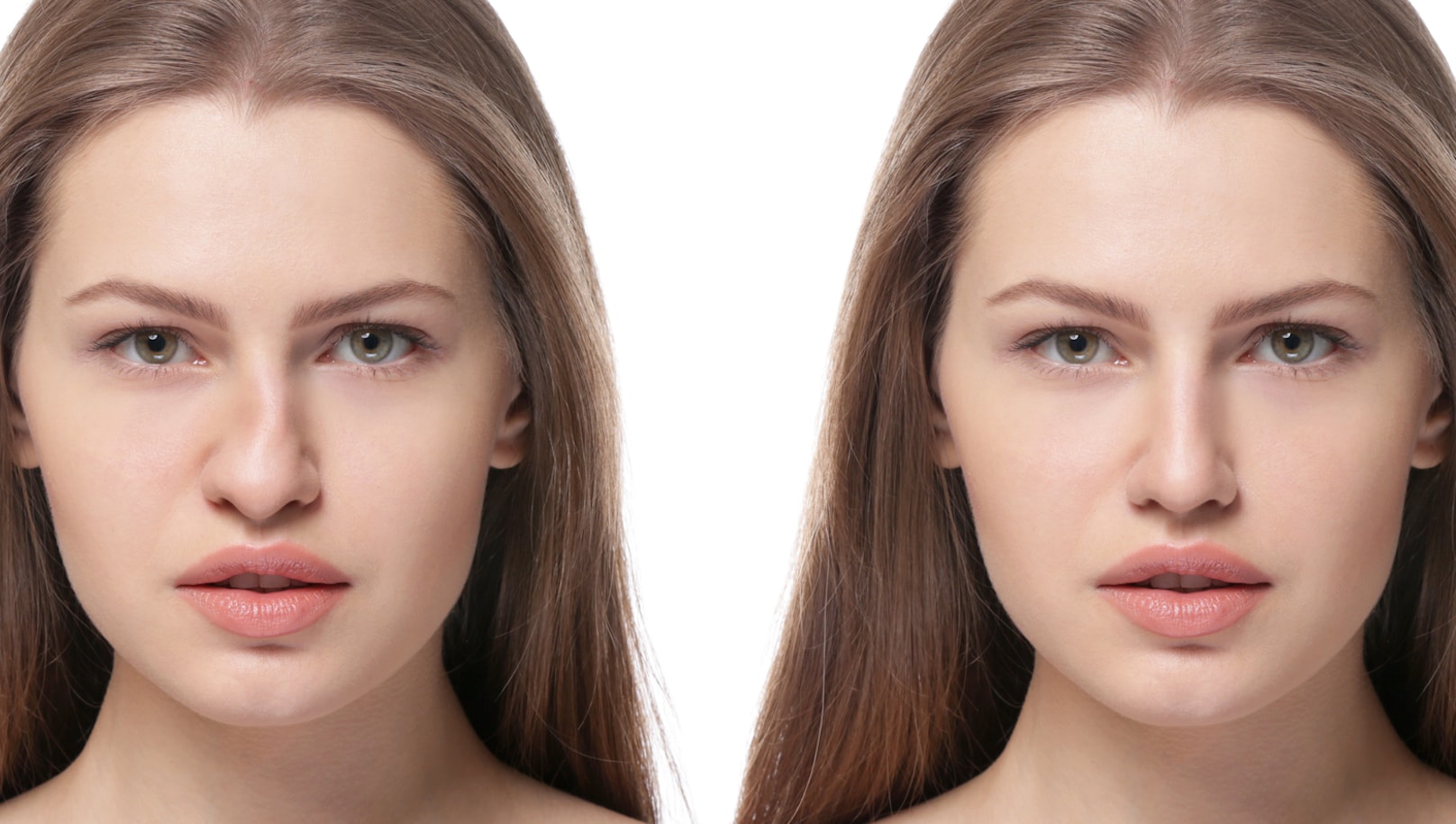

Revision rhinoplasty is a surgery done to correct or alter any changes that were created by a previous nose job operation. The revision can be either cosmetic or functional. A cosmetic revision is if the patient has some lingering issues that he, or she, is not happy with such as wanting the tip of the nose to be narrower. A functional revision occurs when the patient needs additional surgery if they are having trouble breathing as a result of the previous surgery. Revision rhinoplasty is not necessary done after every nose job and is actually determined on a case-by-case basis. The goal with revision rhinoplasty is to make sure patients look natural with an aesthetically pleasing nose that fits their face. When too much rhinoplasty work is done, the shape of the nose no longer fits the face.
As mentioned above, revision rhinoplasty is not necessary for all rhinoplasty patients. GOOD CANDIDATES for the procedure include:
On the other hand, patients who are NOT GOOD CANDIDATES include:
The procedure can be performed under general or local anesthesia. Revision rhinoplasty might take longer since the surgeon is correcting an issue from the first surgery.
Incisions for revision rhinoplasty can be made on either the inside of the nose (closed rhinoplasty) or the underside of the nose (open rhinoplasty). In general, if the nose needs major structural changes, doctors often perform an open rhinoplasty so they can have a better view of the nasal structure. Minor corrections are usually performed via a closed technique.
When revising the nose, there are a few steps the surgeon can take depending on the needs of the patient:
Other Options to Consider:
The first thing to consider is if the surgery is worth doing in the first place. Minor asymmetries between the two sides are usually not a good reason to do surgery. Fillers are a non-surgical option that can add volume and alter the appearance of the nose. Fillers offer good results with minimal recovery time and few complications.
The final cost for revision rhinoplasty depends on a number of factors:
In general, the price of revision rhinoplasty is anywhere from $10,000-$20,000.
The RECOVERY for revision rhinoplasty is similar to the initial rhinoplasty surgery:
Patients should expect about a week of DOWNTIME after the surgery. Any additional downtime might be necessary if the surgeon had to remove cartilage for the revision. The area where the cartilage was removed will be sore and might be more sensitive than the nose itself.
The nose usually does not hurt a lot after surgery. There might be some pressure but not a lot of pain. Most people are presentable after ten days and are able to go out and not have anybody notice they had surgery. People are able to lightly exercise two weeks after the surgery.
The results of revision rhinoplasty are permanent as long as the patient does not experience trauma to the nose or wish to have further revisions made to the nose.
It takes about four months for the swelling of the nose to completely dissipate. Overall, it can take up to a year for the final results to be visible.
While revision rhinoplasty can create great results, there are some LIMITATIONS to the procedure:
Some revision rhinoplasty RISKS include:
Rhinoplasty is a complicated procedure that requires someone with a lot of experience and skill. A patient needs to put a lot of time and effort into researching surgeons so they can get the desired results the first time and avoid a revision surgery. If there are any physical changes to the nose that bother the patient, they can likely be remedied with revision rhinoplasty. It is very important that the doctor be aware of what the patient is looking for in order to make sure the person is a viable candidate for revision surgery.
Written by Cosmetic Town Editorial Team - MA
Based on an exclusive interview with Kristina Tansavatdi, MD in Westlake, CA